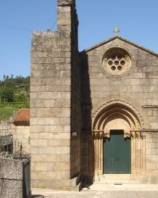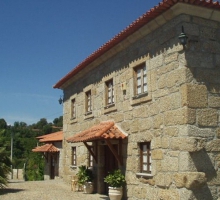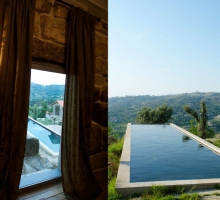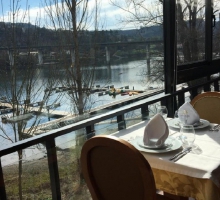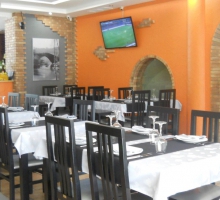While sources attest the existence, in the 12th century, of two temples in Tabuado, one dedicated to Saint Mary and another one to the Saviour, the latter seems to have won out as the leading patron. This was, however, erected later on, probably in mid-13th century, according to the proto-Gothic rosette in the main façade and other ornamental elements of the building.
The main portal stands out for its quality: tympanum supported on corbels [salient support stones] in the form of bovine heads (such as the ones in the Monastery of Paço de Sousa, Penafiel) and capitals carved with botanic motifs. Also featured here is the pearls motif, recurrent in the Romanesque of the basins of the Tâmega and Sousa.
The belfry stands as a defensive tower. In the body of the nave, and at the level of the cross arch, two buttresses remain, which accentuate the volumetrics of the Church.
Inside, the most evident trace of the Romanesque is the triumphal arch, whose archivolts sit on two columns, with the lines of ashlars decorated with saw teeth and chained circles. Their capitals result from a contemporary arrangement.
Vibrant is the 16th century mural painting that covers the back wall of the chancel, depicting Christ as a judge, flanked by Saint John the Baptist and Saint James, the Greater.
Location: Marco de Canaveses
